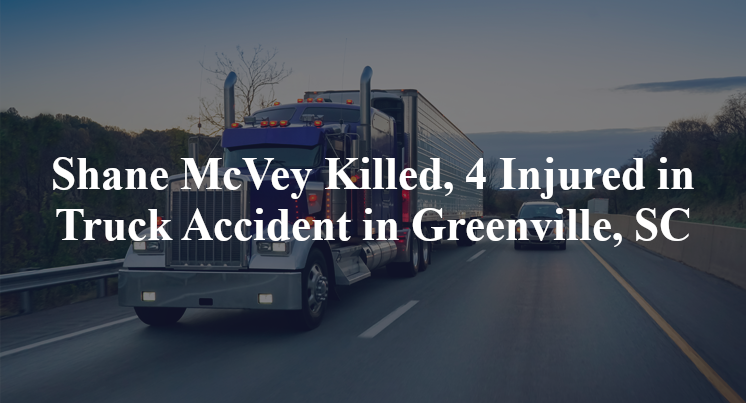Shane McVey Killed, 4 Injured in Truck Accident in Greenville, SC
Greenville, SC — September 26, 2025, Shane McVey was killed and four other people were injured in a truck accident at about 5 p.m. on White Horse Road/U.S. Route 25.
Authorities said a northbound Toyota 4Runner was turning west onto State Highway 123 when it was hit by a southbound semi-truck.

All five people in the Toyota were hospitalized with unspecified injuries after the crash, according to authorities.
Passenger Shane Roberts McVey, 19, died September 27 from injuries suffered in the crash, authorities said. He was an Anderson University student from Aberdeen, MD.
The truck driver was not hurt, according to authorities.
Authorities have not released any additional information about the Greenville County crash at this time.
Commentary by Attorney Michael Grossman
When people read about a crash like the one in Greenville involving an SUV and an 18-wheeler, the first thing they usually want to know is: How did this happen? The reports say a Toyota 4Runner was turning left onto State Highway 123 when it was hit by a southbound semi-truck, but beyond that, critical details are still missing.
From a legal standpoint, whether the truck was speeding, distracted or simply unable to stop in time makes all the difference in assessing responsibility. At the same time, it matters how the 4Runner was executing its turn. Was it yielding properly? Did it misjudge the truck’s distance or speed? These aren’t idle questions. They’re the starting point for figuring out what actually went wrong.
Unfortunately, the available reports don’t say much about what either driver was doing in the moments leading up to the collision. That leaves us with a lot of unanswered questions. Was the truck traveling too fast for the conditions? Was the driver distracted, possibly by a cell phone or in-cab system? Was the 4Runner already in the intersection when the truck approached? These are not things we can guess at. They require evidence.
In cases like this, one of the first things I want to know is whether the truck’s black box (engine control module) has been preserved. That data can show the truck’s speed, braking, throttle use and more in the seconds before the crash. If the truck had dash cams or in-cab cameras, those can offer direct visual evidence of how the collision occurred. And let’s not forget the truck driver’s phone records. Something as simple as a distracted glance could be enough to miss a turning vehicle.
There’s also the question of the trucking company’s role. Did they put a driver on the road who lacked proper training or had a problematic driving history? I’ve handled cases where companies hired drivers with multiple red flags on their records, including prior terminations. In one case, a driver had failed multiple driving tests but was still cleared to operate an 18-wheeler because of weak company policies. When a crash happens under those conditions, it's not just a question of what the driver did. It's about whether the driver should have been behind the wheel at all.
At the end of the day, the public shouldn’t have to rely on assumptions or incomplete information. The investigation needs to be thorough, evidence-driven and transparent. That’s the only way to ensure that the right parties are held accountable.
Key Takeaways:
- Critical facts remain unknown, including whether the truck was speeding or distracted and whether the SUV yielded properly.
- Black box data, dash cams and phone records will be essential to understanding what happened.
- Trucking company policies and the driver’s record could be as relevant as the crash itself.
- Determining fault requires a full and independent investigation, not speculation.
- Responsibility in these cases may extend beyond the driver to the company that put them on the road.

“These are essential reads for anyone dealing with the aftermath of a truck wreck”– Attorney Cory Carlson